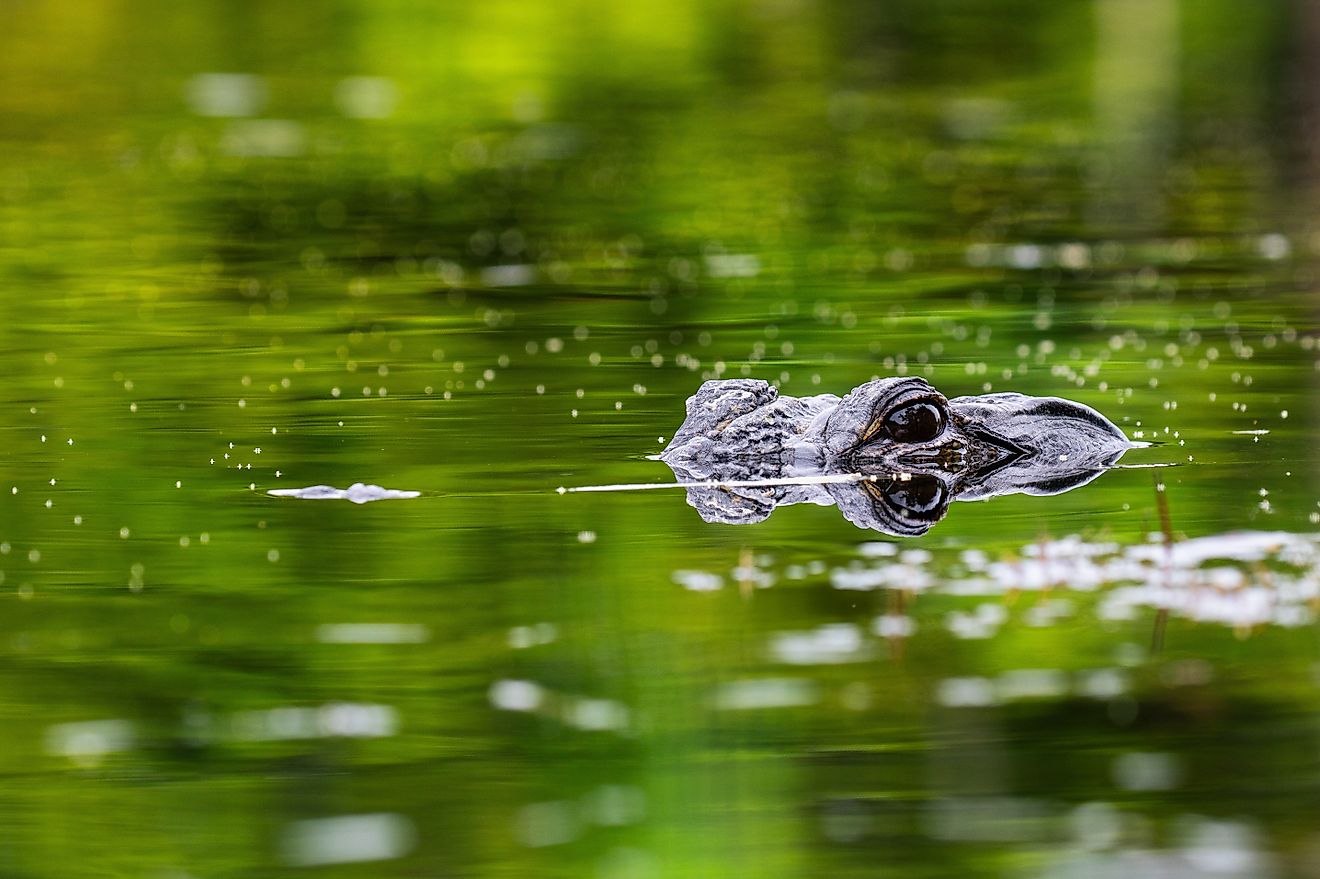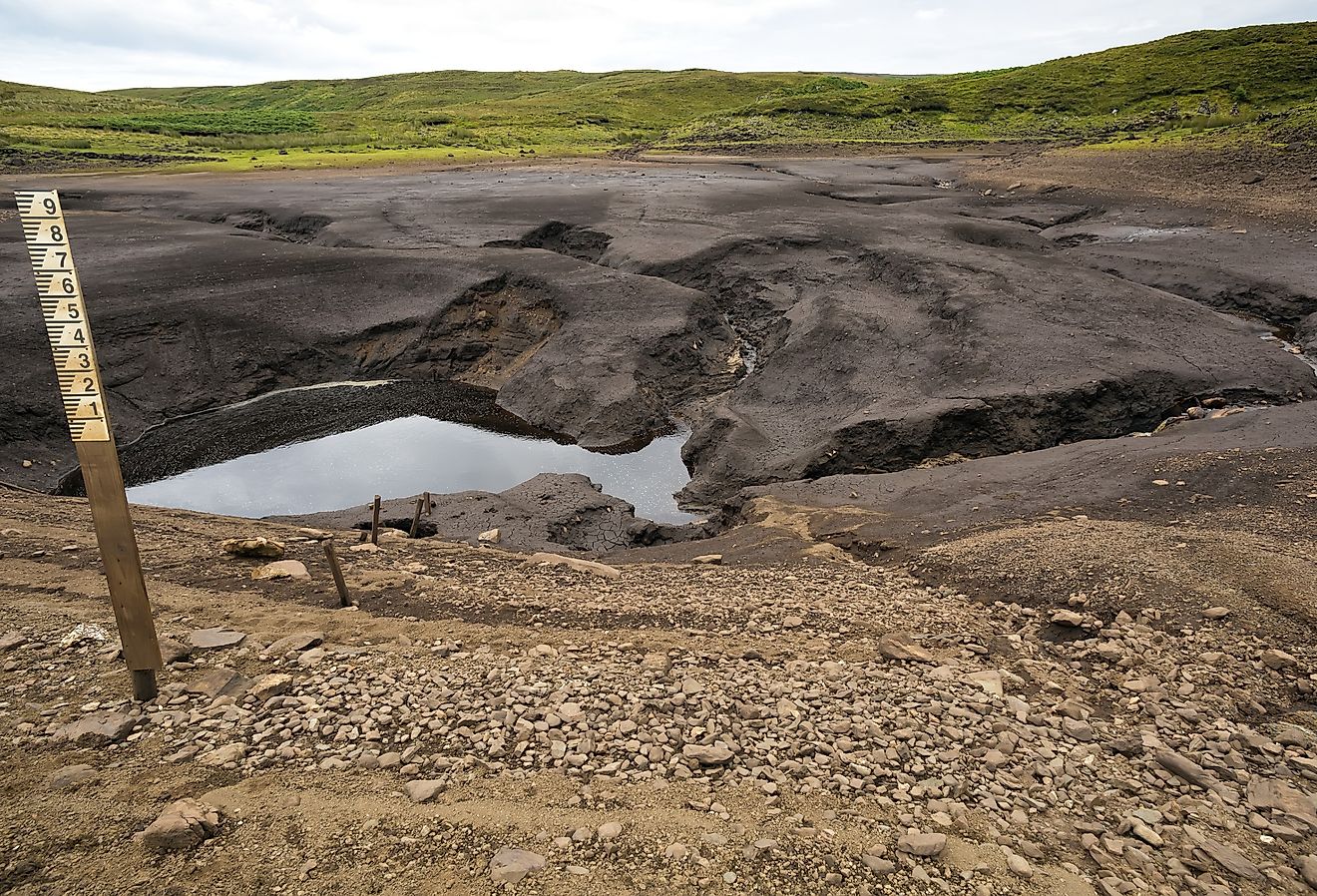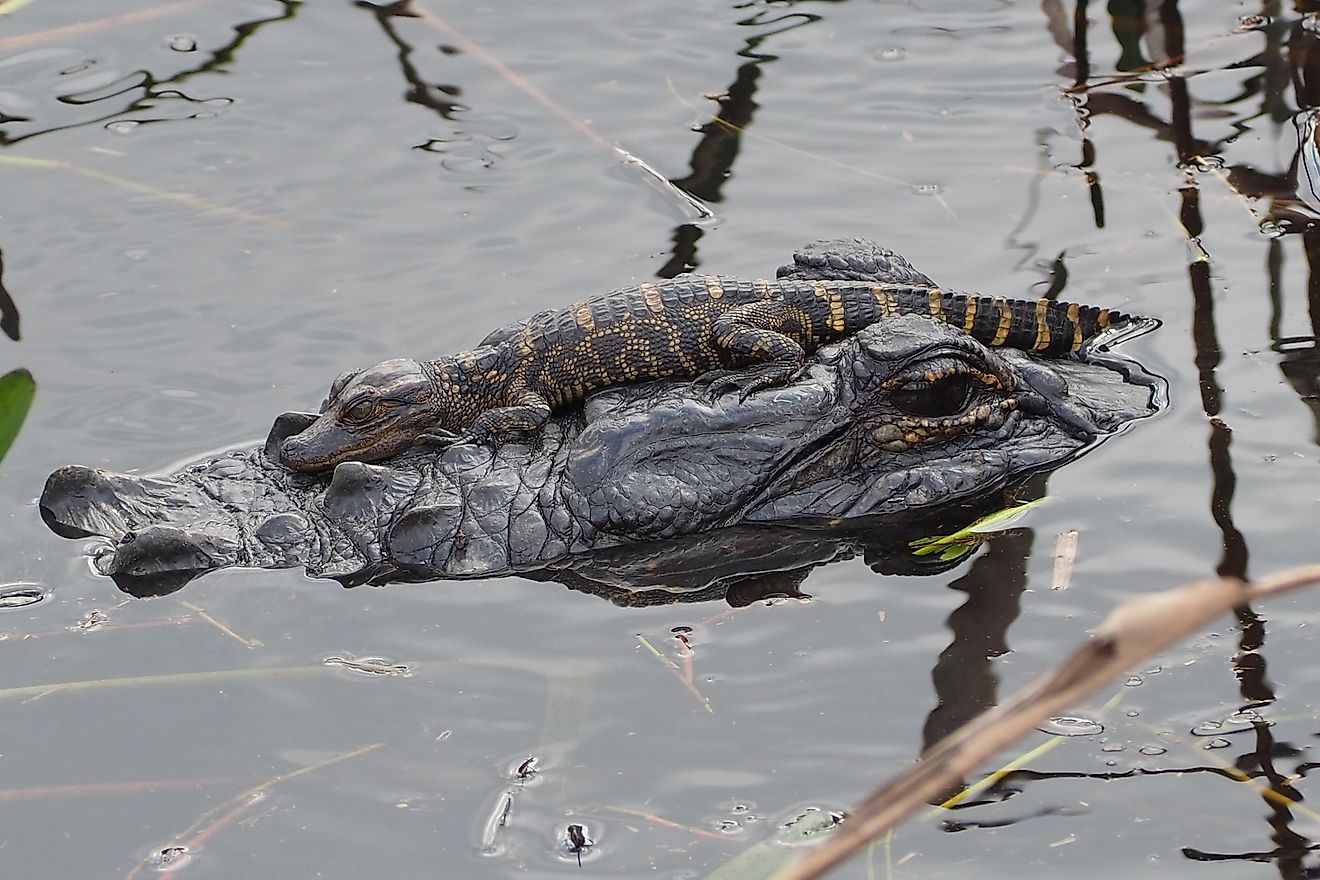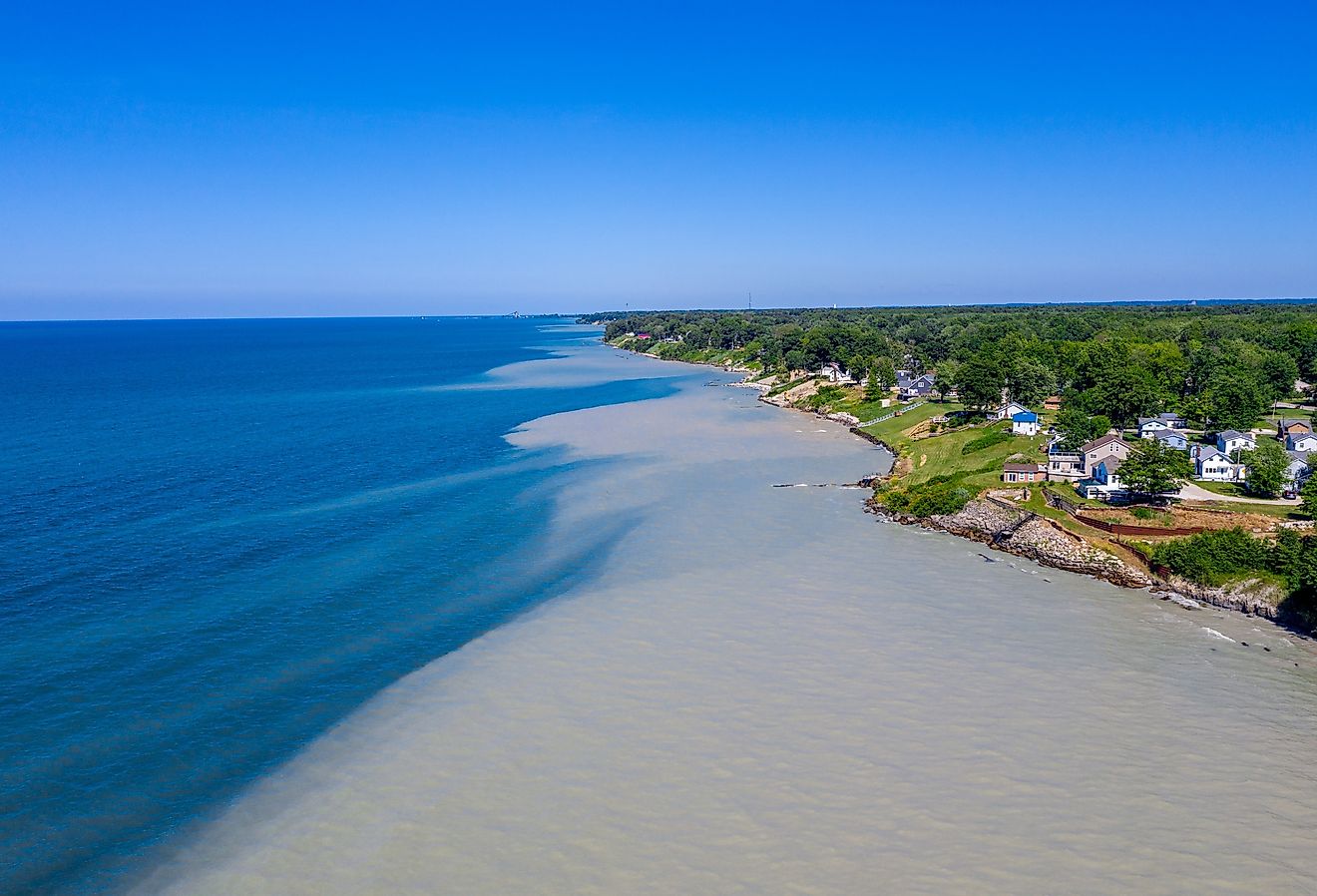
How Man-Made Lakes Reshaped Entire Regions
Some lakes form gradually over centuries, carving out deep pools from layer upon layer of sediment and rock. Others have a quicker and more deliberate origin story. Today there are tens of thousands of man-made lakes across the world, used for a variety of purposes. In the United States alone, 48% of lakes assessed by the Environmental Protection Agency in 2012 were artificially constructed. Constructing a lake is no easy task, and it comes with a cost. There are obvious benefits to creating lakes where none existed, but these reservoirs also reshape the landscape. From their construction to their use, man-made lakes have a significant impact on the local ecology, economy, and environment.
What is a Man-Made Lake?

Man-made lakes, also known as reservoirs or artificial lakes, can’t be created just anywhere. A basin must be excavated, or, more commonly, a natural valley or canyon is flooded as water builds up behind a newly-constructed dam. Maintaining the reservoir requires a reliable water source such as a river, rainfall, groundwater, or snowmelt. A dam built for hydroelectric power may stop generating electricity if water levels drop below a minimum level. Dams require complex water management systems to help keep the levels steady, allow engineers to check the integrity of the structure and enable scientists to regularly measure water quality.
Why are Reservoirs Created?

Man-made lakes serve a number of functions. Fundamentally, they are a way of storing water that can then be used to provide drinking water to communities, support agriculture, and hedge against drought or floods. Another common reason for reservoirs is power generation. The most famous example of this is Hoover Dam, one of the tallest dams in the world and sustainer of the largest-capacity reservoir in America, Lake Mead (though it has not been full in recent years due to drought). Hoover Dam was built to control floods and generate hydroelectric power and by 1939 was the world's largest hydropower plant.
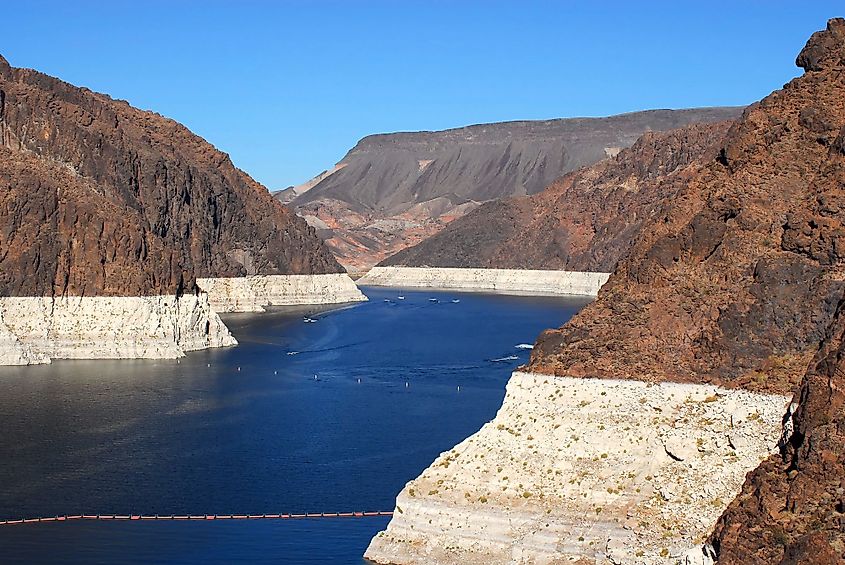
Bleached Canyon Walls Reveal Historically Low Water Levels at Drought-Stricken Lake Mead, Nevada, and Arizona.
More than 7 million people visit Hoover Dam every year, and 9 million visit Lake Mead. This illustrates another function of artificial lakes: as tourist attractions and recreation areas. Lake Mead Recreation Area in Nevada, Oahe Downstream Recreation Area in South Dakota, and Lake Sakakawea State Park in North Dakota are some of America’s most popular recreation areas around man-made lakes.
The Earliest Reservoirs

There is evidence that man-made lakes were first constructed in ancient Egypt, Mesopotamia, and China. It’s no surprise that the most sophisticated civilizations were the ones to pioneer the use of dams. Much like today, these societies were looking for a way to create reliable irrigation and a consistent source of drinking water. Once built, these reservoirs gave them a reliable source of water that helped grow their populations and gave them an advantage over their neighbors.
The oldest man-made lake in the world that is still operational today is the Quatinah Barrage, also known as the Lake Homs Dam. Located in Syria, it is thought to date back as far as 1300 BC, but was rebuilt by the Romans in 284 AD and has been in continuous for around 1,740 years since then. The Proserpina Dam in Spain takes the title of second oldest dam currently operational. Built by the Romans in the 1st-2nd century AD, the dam provides water to the nearby city of Mérida and is a UNESCO World Heritage Site.
Positive Impacts of Man-Made Lakes

Creating a lake profoundly and permanently alters the landscape around it. Located on the border of Arizona and Nevada, Hoover Dam has transformed the region around it since it was built in 1936. Today, Lake Mead is the main source of water for about 20 million people, supplying cities like Las Vegas and Los Angeles with drinking water. It also provides irrigation to 2-2.5 million acres of land and enough clean energy annually for 300,000-450,000 homes.
Similarly, the Oroville Dam in California has changed the state’s landscape. The tallest dam in the country, it was built in the 1960s to create Lake Oroville. The lake's water eventually reaches the California Aqueduct supplying the drought-prone San Joaquin Valley. According to state estimates, Oroville’s flood-control operations prevented roughly $1.3 billion in damage between 1987 and 1999.
Negative Impacts of Man-Made Lakes

Oroville Dam and Lake also exemplify the negative aspects of man-made lakes. In 2017, a spillway on the dam failed triggering the evacuation of about 180,000 people in three counties. The displacement of communities, combined with the devastating ecological effects, cost California about $1.1 billion to repair.
Dam construction displaces local human and animal populations and disrupts the regional ecological balance far up and downstream. It affects fish migration, bird breeding and nesting behaviors and the behavior of other animal species. Artificial reservoirs and overuse of water resources can deprive downstream ecosystems of essential water. For example, as a result of dams and water diversion, most years the Colorado River dries completely up before reaching the Gulf of California. And few people realize that dams and reservoirs are a source of greenhouse gasses from decaying organic matter in oxygen-poor water.
A Paradoxical Technology
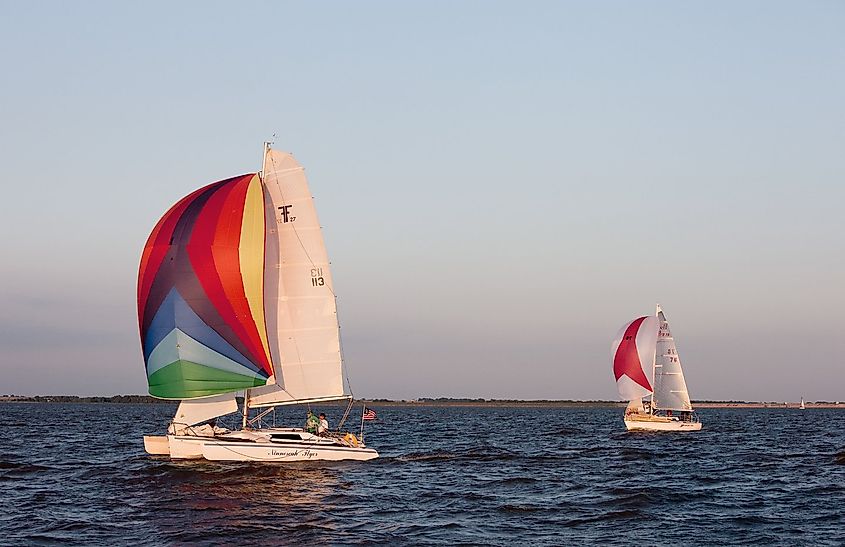
It’s hard to overstate how much man-made lakes and the dams that create them can change a region. They power cities, irrigate farms, and provide drinking water for millions. They provide protection from floods and drought, employment, and opportunities for recreation so urban dwellers can reconnect with nature. On the flip side, diverting rivers, building lakes where they didn't exist, and artificially managing the flow of water have an acute effect on the environment that must be weighed against the benefits. So, the next time you spend a serene summer’s day hiking the shore, lazing on the beach, or splashing about in a man-made lake, remember you are benefiting from a technology that began with ancient engineers, and still shapes civilization today.







